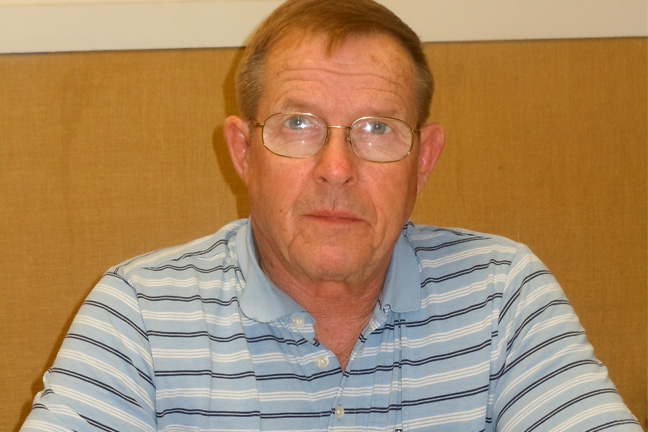
Agricultural News
Joe Harris Retires from Oklahoma Boll Weevil Eradication Program
Mon, 17 Dec 2012 09:36:29 CST

Three men have overseen the efforts of the Oklahoma Boll Weevil Eradication Program since its inception in the late 1990s. Joe Harris,. the third of these OBWEO executive officers, retired as executive director November 30, 2012. His replacement is John Henderson, who had been serving as assistant director of the Oklahoma program.
Harris began his service with OBWEO in 1999 as a part-time contractor with the program, When it was decided all people working for the eradication program should become state employees, Harris becam the Kiowa County field supervisor in 2001. then business finance officer in 2007 and the executive director in 2007.
Before Harris took over as the head officer, the first executive director was Jerry Coakley, Hobart farmer, followed by Bill Massey, who now lives at Kingston.
The last boll wevil in Oklahoma was found in 2008. Since then no boll weevils have been discovered. Insect traps are still placed ever 80 acres in all fields with a growing cotton crop, Harris said. "In comparison," he said, "at first, we had traps placed on ever 10 acres to make sure we were detecting where they were located."
By the middle of the 1990 decade, the depredations of the boll weevil, which feeds on the growing crop, had nearly stopped dryland cotton production in the US. The cost of applying insecticdes to control the weevils proved to be too expensive, along reduced cotton production, to make growing cotton profitable. "About the only time cotton production was profitable was when irrigated production resulted in enough cotton to be harvested tooffset the tremendous cost for growing the crop," Harris said.
For dryland cotton farmers, the top crop, that is, the last bolls of cotton to open in the cotton plants at the end of the growing season, often proved to be the difference between the farmer making enough money to pay for his crop production expenses and still make a profit, Harris said.
The boll weevil was stopped with cotton farmers voting state-wide referendums to allow a portion of each cotton bale they sold to be set aside at each cotton gin to be pooled into a fund to finance the eradication program, Each cotton-growing state then established a boll weevil eradication program. Insect traps baited with pheromones released by the weevils seeking each other for reproduction purposes were placed in all cotton fields. Cotton scouts routinely checked the traps. Numbers of insects caught in each trap dictated which fields would be sprayed by aerial applicators to kill the insects.
All old buildings, trash and other places where the boll weevils could overwinter were torn down. Cotton stalks were removed from fields after harvest. Some states still require stalks to be removed by a certain date.
Oklahoma's OBWEO program is now in a post eradication maintenance phase, Harris explained. "This is a wait and watch phase," he said. "We still put out traps on every cotton field on ever 80 acres to keep watch. How long this phase lasts is anyone's guess."
There are bolls weevils present in the Rio Grande Valley in South Texas right now, he explained. Weather developments such as hurricanes in the Gulf of Mexico can and have brougnt tbe insect back to areas of the southern US after the weevil had been eradicated.
WebReadyTM Powered by WireReady® NSI
Top Agricultural News
More Headlines...



















